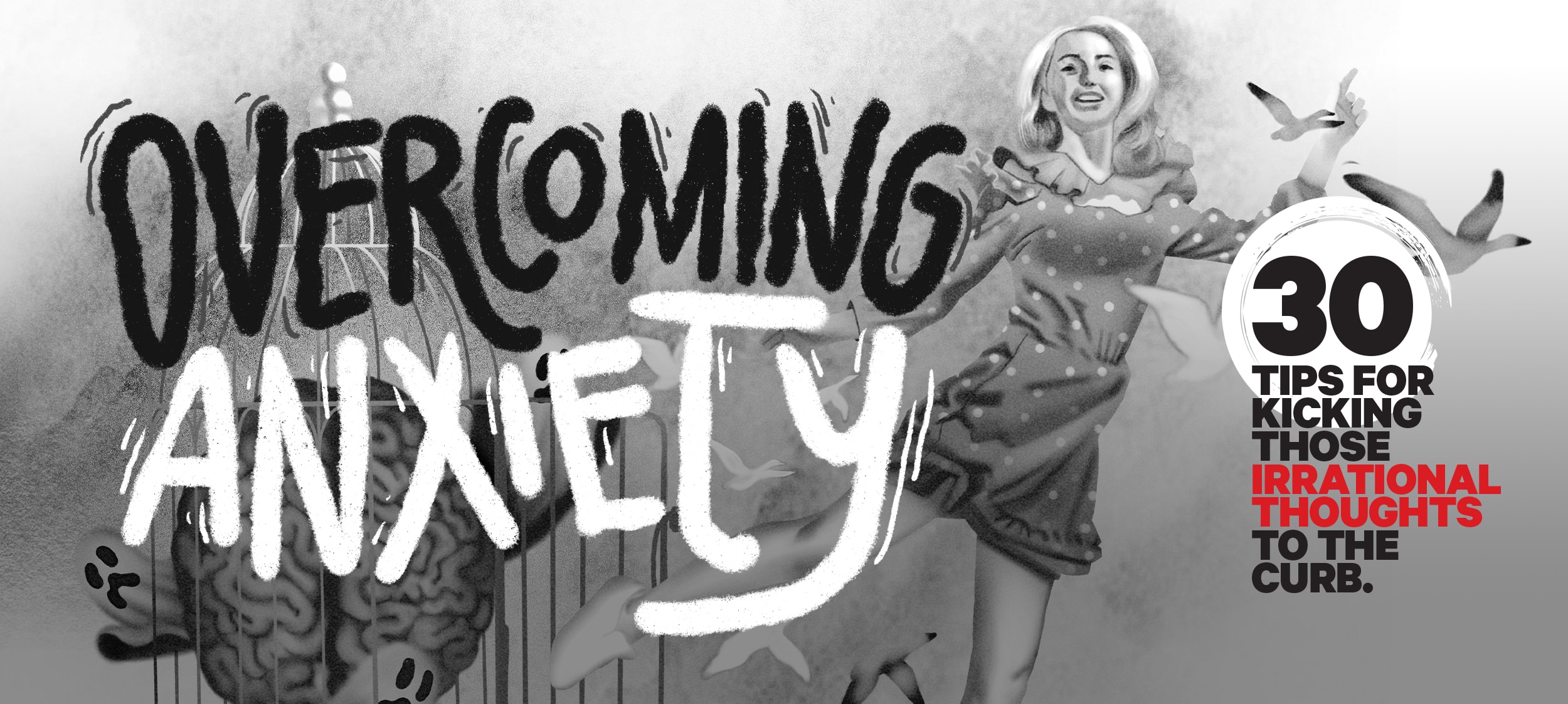
30 Ways Screen Printers Can Overcome Anxiety
Elevate your mental health with these coping strategies, including several from your peers.
Published
11 months agoon
ANXIETY DISORDERS ARE the most common mental health issues in the US.
According to data from the National Institute of Mental Health, they affect one in three adults. The rates are even higher among business owners, with one recent study from the University of California, San Francisco finding half of surveyed entrepreneurs suffered from conditions such as anxiety and depression. The reasons likely relate to their wide-ranging responsibilities and constant focus on the vagaries of the future.
According to Screen Printing’s recent Brain Squad survey, screen print pros are no exception. When asked how often they get severely anxious about business-related matters, 18 percent of respondents said once a day, 23 percent said once a week, and 15 percent said a couple of times a month. That’s 56 percent of screen printers in decision-making positions reporting they experience severe anxiety monthly.
Anxiety is a fact of life for many of you. “Owning a manufacturing business can be super stressful,” Matthew Pierrot of GetBold – T-shirt Printing and Embroidery says. “We’ve all had the job that went wrong and then what? I remember coming to work one morning to see all the sweatshirts printed during the night shift had sublimated terribly. These were expensive customer-provided and custom-sewn sweatshirts. There were more than 1000. They were all garbage. I nearly vomited. I went for a long walk. I told myself that even though this is bad, it wouldn’t sink the ship. Mistakes happen at every printer, but it’s how you deal with them that matters. Then I gathered up my courage, and my check book, and went to visit my customer… And they’re still my customer.”
Ron Augelli of WeTalkShirty.com says, “Being in business for so long I have personal expectations. Those expectations are then pushed onto orders and through our processes. Most recently we have had a spike in production and with this came anxiety of how to manage the production and expectations. Thankfully I have a great staff and we leaned on each other to push through. We are always about improving and educating where we can. This is where bringing in a consultant is valuable to helping with the growth, the processes, and keeping your anxiety down. There isn’t a written scroll of how this industry should run; we are all writing a part of it.”
The remaining 44 percent surveyed aren’t totally in the clear. Of that figure, 31 percent report feeling severely anxious a few times a year. Dan Reeve of The E. B. Wood Group was once “so stressed out, it triggered a migraine, which in turn ended up with me going home. It didn’t improve the stress level as I had twice as much to deal with when I returned the next day.”
AdvertisementOnly 13 percent surveyed indicated they pretty much never experienced work-related severe anxiety.
“I think as an entrepreneur you learn to deal with it because you still have to get the job done,” Jeremy Picker of Amb3r Creative says. “The urgency of our industry makes it tough to just ‘relax’ most of the time. Deadlines, mishaps with the supply chain, and staff hiccups all make it super intense.”
From an evolutionary perspective, anxiety is easy to understand. An emotion-fueled drive to know whether danger lurks around the bend was tremendously advantageous for early humans. When we get anxious, a structure in the brain called the amygdala – the seat of fear – releases stress hormones such as adrenaline and cortisol, as well as glucose, into the bloodstream. The heart, sweat glands, and mental faculties all ramp up. We’re now primed for a fight (or flight) for survival.
However, when the triggers of these changes are more likely to be worries about blown deadlines than encountering predators, anxiety can become unnecessarily discomforting and exhausting. Additionally, anxiety is unlike other physiological sensations that provoke specific responses – eating in response to hunger, finding company in response to loneliness – in that it doesn’t abate when you make efforts to fend off the threat. It hangs around feeding on itself.
Even worse, it’s not even very good at defining or predicting danger. Studies show when we lack definite information, we make very poor judgments, and we do so in predictable ways. We’re notoriously terrible at assessing risk; we worry about all the wrong things. We rely on anecdotes rather than data. We fear events that bring to mind vivid imagery, such as shark or terrorist attacks, but not the far greater threats posed by cheeseburgers and road accidents. (In studies, people are willing to spend more on travel insurance that would pay out $100,000 for death by terrorism than for insurance that would pay the same for death from any cause.) Compounding the torment is that our brains seem wired to resist uncertainty. (Studies show most people would rather receive a shock now that’s twice as painful as receiving a random shock in the next 24 hours.)
For some people, anxiety creates a debilitating negative spiral that can take over their lives. (If anxiety is inhibiting your ability to function – to work, to sleep, and to do even simple things like go out of the house – we recommend you seek professional help.) However, even for people without such disorders, overthinking, ruminating, and angst can limit the ability to enjoy life and stunt professional growth.
AdvertisementThe standard advice to deal with anxiety is to live more fully in the present – embrace the moment! Be here now! Bring calm to your mind. However, anyone who has tried even the most basic mindfulness exercise can attest this is fiendishly difficult.
There’s no running from anxiety. Suppressing it doesn’t work; medication only masks the problem by providing temporary relief. Trying to control the future not only tempts fate, but also makes anxiety worse by reinforcing focus on what is yet to come. Our constant efforts to eliminate the negative are what cause us to feel anxious, insecure, and unhappy in the first place.
So what to do? There’s no quick fix. It’s a fight you can’t win. Dealing with anxiety essentially involves rolling with life’s punches and applying a heavy dose of reframing.
First, understand a life without challenge would be boring. Life is full of vexing situations. Abandon your need to establish complete security, and you’ll realize you never needed it in the first place.
Second, as the Stoics liked to say: The obstacle is the way. The path to growth is to do difficult things. That necessitates engaging with and getting used to your anxieties and fears. However, you should not become subservient to them. Rather, consider the writer Elizabeth Gilbert’s approach, which essentially involves treating anxiety like an annoying younger sibling. The trick isn’t to ignore fear or worry, or to destroy it, and definitely not to obey it, but to make space for it. She uses the analogy of a road trip. “Fear always comes along for the ride, and that’s fine – but that doesn’t mean you need to let it anywhere near the steering wheel.”
In the following pages, we suggest ways for you to stay in control. Courtesy of our readers, mental health experts, and psychology writers, these tips include actions to take when anxiety strikes, coping strategies, and ways to build resilience.
AdvertisementPART ONE: EXPLORE YOUR ANXIETY
Breeeeeathe
The onset of anxiety has been compared to a hijacking of your amygdala, that primal part of your brain responsible for your fight-or-flight response. The key is thus to re-engage your thinking brain, convince it you are actually safe, and talk your mind down from the ledge. One of the best ways to do that is with deep breathing, which raises oxygen levels and helps expunge the carbon dioxide that builds up when you’re stressed.
Maude Swearingen of Fully Promoted Arbutus partakes in “deep breathing exercises and yoga.” The 4-7-8 method (inhale for four seconds, hold for seven and exhale for eight) is probably the best known strategy. Alternatives include box breathing – a method used by the Navy SEALS that also involves slow, controlled breathing – and the double inhale championed by popular podcaster Dr. Andrew Huberman.

Divert Your Attention
A screaming baby faced with a grownup making silly noises will often fall silent; it can’t focus on being distressed and intrigued at the same time. Adults aren’t so different. (Ever tried playing Sudoku while ranting internally?) With our limited attentional bandwidth, even minor acts of distraction – listening to music and focusing intently on the words, doing some basic math, focusing on the needs of others – can help silence negative thoughts or buy time until emotions die down.
However, distinguishing healthy distraction from unhealthy avoidance is critical. Binging on Netflix for 20 hours when an issue obviously needs to be confronted is more like unhealthy avoidance.
Play the 5-5-5 Game
Another way to stop ruminating about the future and get back to the present is to take stock of your immediate physical surroundings. Try the 5-5-5 game:
- Look around and name five things you can see.
- List five things you can hear.
- Move five parts of your body you can feel (i.e., rotate your ankle, wiggle your ears, or nod your head up and down).
- Other physical interventions, such as taking a cold shower or sniffing lavender oil, also can act as circuit-breakers for spiraling thoughts.
Name the Trap
According to Dan Harris, the broadcast journalist and author of Ten Percent Happier, naming or labeling bedeviling thought patterns can convert a vague threat into something concrete you can address. “Just labeling it, just calling it out, and saying it out loud … It’s the visibility that is the kryptonite for the ego. That seeing it really de-fangs it, which is kind of amazing. And that can happen in a minute,” he said on a recent podcast.
Identify your thoughts. Telling yourself “This is a panic attack” (or it is catastrophizing, black-and-white thinking, or another cognitive distortion) enables you to regain power by realizing you’ve encountered it before – and survived. This storm will also pass. “There’s nothing I need to do.”
Ask Questions
The unknown is the playground of anxiety. In this battle with irrational thoughts, having a battery of questions can help you identify the unknown that is bedeviling you.
One of the best questions, courtesy of meditation teacher Sylvia Boorstein, is: Is this useful? Worrying about say, an upcoming client meeting can feel productive, like you’re doing something substantial about a potential problem. But in truth, you’re not. You’re likely ruminating – stuck in a loop, having the same thought over and over. This is particularly the case when it involves something over which you have no control, such as the weather or the stock market.
Whatever it is, come to terms with the fact it’s out of your control. “The things that are in your control, you can manage just fine,” Marcel Schwantes writes in Inc. magazine. “So, do yourself and the people closest to you a favor: Take it easy, do one thing at a time, and then refocus again on what’s immediately in front of you.”
Pepper your amygdala with questions: “What’s the threat here? What am I actually afraid of? Have I heard this before?” Such questions fire off the prefrontal cortex, which can relieve the anxiety.
“I don’t have debilitating anxiety, but I occasionally go through times when I don’t think I’ve prepared enough or researched something to discuss it professionally,” Marshall Atkinson of Atkinson Consulting says. “Frankly, this drives my curiosity and pushes me to ask questions with others in the field who know more.”
Say an Affirmation
In the face of anxiety’s assault on our equanimity, clinging to short, somewhat positive statements can remind you this mental storm is being caused by a transient and ultimately unimportant event. Examples include:
- “It wasn’t that bad in the past.”
- “It won’t last forever. This too shall pass.”
- “This is going to be a good time… or a good story.”
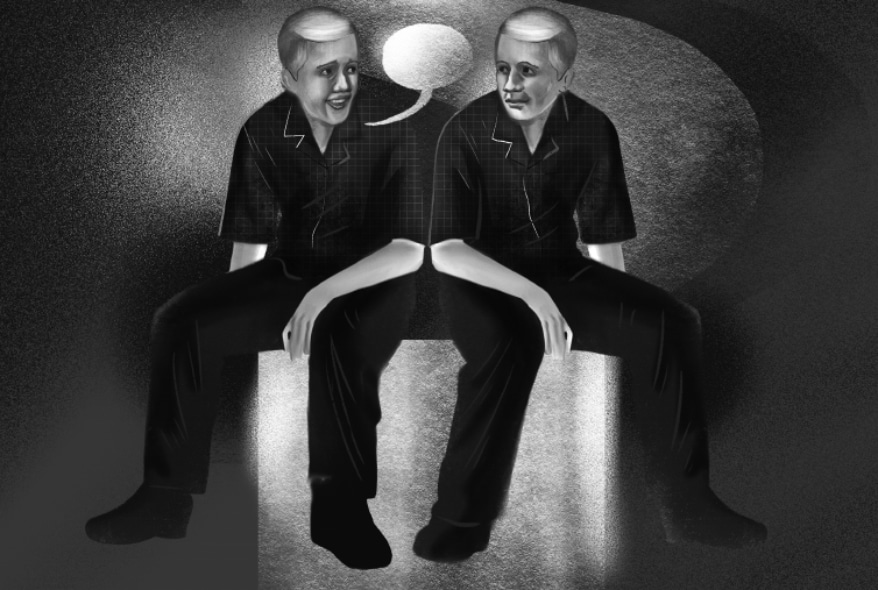
Talk the Self-Talk
Cognitive therapy’s main insight – that how we think about a situation determines how we feel, so we can feel better by addressing distorted thinking – is now a self-help mainstay. It’s hard to appreciate how revolutionary it was 50 years ago, when psychotherapy was fixated on unpacking subconscious drives. And yet, this well-understood message is easy to forget it when you are in the grip of anxiety.
“These irrational ‘automatic thoughts’ that anxiety arouses usually come in the form of absolutistic musts, shoulds, oughts, and other demands, such as ‘I must do well,’ ‘Others ought to treat me well,’ or ‘Things need to work out the way I want them to,’” notes psychology blogger Eric Barker, citing the work of the pioneering cognitive psychologist Albert Ellis. This allows you to play a game of “Find the Irrational Belief.” When confronted with anxious feelings, identify examples of absolutist thinking, then dispute that thinking. Next, turning those “musts” into realistic preferences can dial down the emotions. For example, “I must do well during this presentation or my life is over,” could become: “I’d like to do well, but it almost certainly won’t be that big of a deal if I don’t.”

Trust In Yourself
Whether you’re dreading an upcoming event or worried about something not going the way you want, trust you have the physical and psychological resources to overcome, just as you have so many times in the past. Talking of his propensity to fret about the unknown future, the writer Oliver Burkeman notes: “And of course the answer in every case – though apparently I need to keep relearning this lesson – is that we’ll cross that bridge when we come to it. We’ll figure it out then, based on what’s actually happening then, drawing on the internal and external resources we’ll have access to then. After all, when you stop to think about it, there isn’t really much of an alternative. When else can you cross a bridge, except when you come to it?”
An anonymous Brain Squad member says: “We’ve recently had some staffing issues that triggered some anxiety in the future of our company and being able to meet the needs of our customers. I was able to think it through and remember that our management team has done all these positions and can do them again if needed.”
Write It Down
If you’re particularly prone to catastrophizing, health experts say it can help to get thoughts out of your head and down on paper. Dr. Martin Seligman, a professor at the University of Pennsylvania and author of Tomorrowmind, recommends creating an Anxiety Balance Sheet to turn your mental state around. On a piece of paper, spend a few minutes filling in four columns titled: “What Do I Know,” “What Don’t I Know,” “What Can I Influence,” And “What Can’t I Influence.”
“About 80 percent of the people I’ve worked this through with are surprised they have more items listed in columns one and three (the ‘good’ columns) than they do in columns two and four,” he told Time. “There’s some liberation in just outlining what’s making you crazy and realizing there may be many balancing positives to those issues that are vexing you. In sum, just the act of unpacking your anxiety bag and knowing what’s inside can have a profound effect on reducing your fear of the future.”
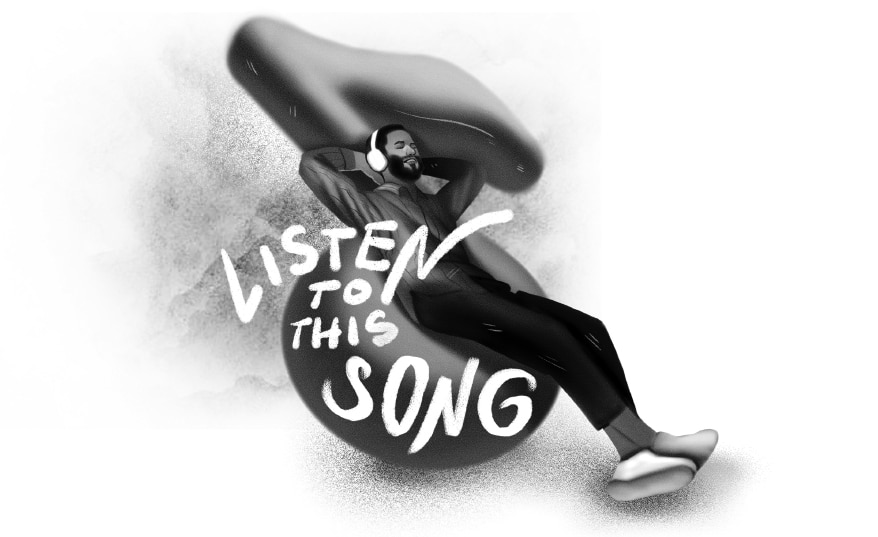
Listen to This Song
A little more than a decade ago, British musicians teamed up with sound therapists to engineer a song specifically designed to calm the nervous system by lowering heart rate, blood pressure, and levels of the stress hormone cortisol. The eight-minute song, called Weightlessness, was found to reduce anxiety by up to 65 percent. “The song … contains a sustaining rhythm that starts at 60 beats per minute and gradually slows to around 50,” Lyz Cooper, founder of the British Academy of Sound Therapy, told Inc. Magazine. “While listening, your heart rate gradually comes to match that beat.”
Dwell on the Worst-Case Scenario
“Set aside a certain number of days, during which you shall be content with the scantiest and cheapest fare, with coarse and rough dress, saying to yourself the while: ‘Is this the condition that I feared?’” The world is a far less turbulent place than when Seneca uttered that thought 2000 years ago, but his message has lost none of its saliency. Articulate your deepest fears in fine detail, and you’ll likely find you can handle whatever eventuates.
The blogger Tim Ferriss, who has probably done as much as anyone to re-popularize Stoic thinking, recounts how he used this approach to tame fears related to a major life decision: “A funny thing happened: as soon as I cut through the vague unease and ambiguous anxiety by defining my nightmare, the worst-case scenario, I wasn’t as worried about taking the trip. Suddenly, I started thinking of (ways) to get back on track if all hell struck at once. I could always take a temporary bartending job to pay the rent. I could sell some furniture and cut back on eating out. I could steal lunch money from the kindergarteners who passed by my apartment every morning. The options were many. I realized it wouldn’t be that hard to get back to where I was, let alone survive. None of these things would be fatal – not even close.”
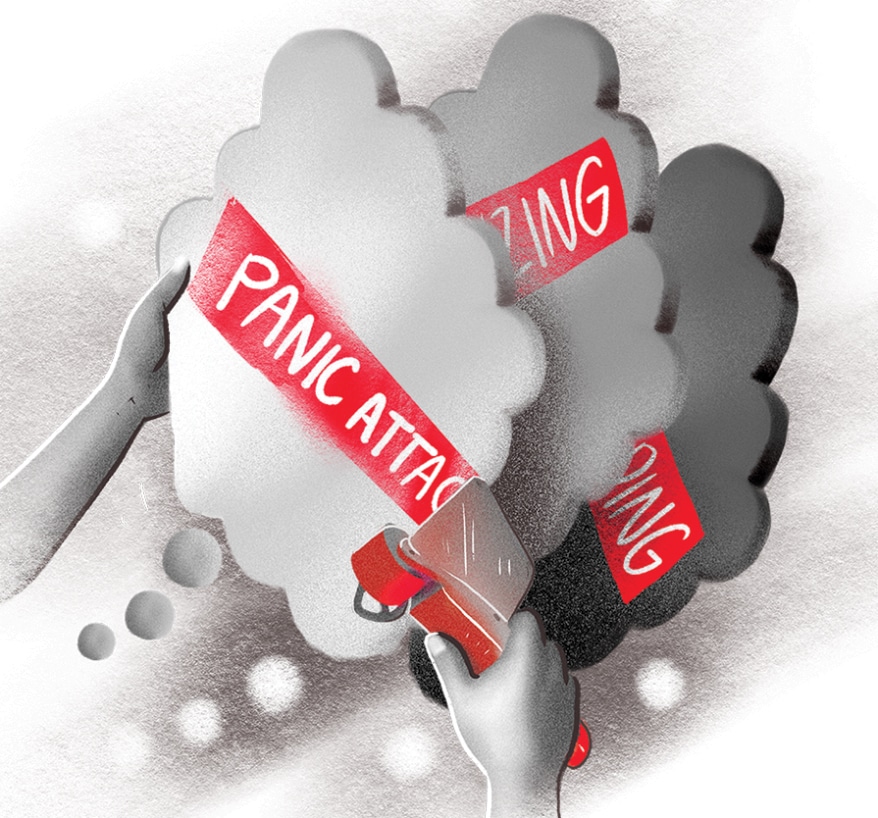
Postpone Your Worries
Not prepared to stare your fears in the face? Schedule a meeting with them for later. “Try setting aside 20 minutes every day, let’s say at 4:30 p.m., just for your worries. If you are fretting at 10 p.m., jot down the reason and resolve to think it through later,” Dr. Robert L. Leahy, director of the American Institute for Cognitive Therapy, suggested to Real Simple. Safe in the knowledge that your concerns will be addressed, you can get on with your life. In the meantime, the issue vexing you might just take care of itself. Psychotherapists call techniques such as postponement “metacognitive,” meaning they make you aware of your habitual thought processes. As a result, they are effective longer than, say, trying to assuage a particular worry by addressing its specific content, battling the emotions it stirs, or even suppressing it.
Take Action … Any Action
Action is the enemy of anxiety. Someone no less self-assured than Jeff Bezos has talked about how this plays out in his business life: “I find that as soon as I can identify it, and make the first phone call, or send off the first email, it dramatically reduces the stress I feel.” Thus, the advice when you feel yourself falling into rumination is to do something, anything! The problem is anxiety also happens to be the enemy of action. When you’re feeling trapped by intrusive, repetitive worry, it’s hard to raise the energy to do anything. The solution? Set the bar really low, especially if your brand of anxiety comes with the taint of perfectionism.
“In the fast-paced world of screen printing, when something goes wrong, we can often feel like everything else follows suit,” Andrew Monteyne of All-County Apparel says. “Instead of panicking, take a few moments to breathe and focus on the root cause of the problem. This will enable you to analyze the issue more objectively and work toward resolving it in a calm and effective manner. Furthermore, instead of letting micro-issues pile up and create an anxiety timebomb, it is best to break them down into smaller chunks and tackle each one individually. This way you can remain calm, composed and in control of whatever your business throws at you!”
Call A Friend
One of the cruel ironies of anxiety is that people often know how to respond when a friend or colleague is struggling, but can’t apply the same remedies to their own mental turmoil. This is why health professionals recommend trying to add some distance to the problem, such as asking yourself what counsel you would offer a friend or a team member in a similar situation, or even talking to yourself in the third person. That’s what tennis great Ivan Lendl would do, as he explained via a post on MensTennisForum.com. “Say you’re nervous before a match, you admit it to yourself. You say, ‘Shit, Ivan is nervous today. But he’s going to snap out of it.’ You describe what you are feeling, and then you let go of it. And it’s over.”
“We’re constantly feeling the pressure when live activating, whether it’s a worry over quality of our premiums being given away or stressing over days where we have multiple events spanning different cities and making sure the operate smoothly,” Maxwell Beehner of Family Industries says. “It’s very common for us to have to figure some things out in real time, but I will usually be the point of contact for tech related issues on site, so we will use things like FaceTime to get through these issues together as a team!”
PART TWO: COPING WITH ANXIETY
Understand the Triggers
According to some mental health literature, the 80/20 approach can also be applied to anxiety. Identify the 20 percent of issues or people that create 80 percent of your anxiety and seek ways to remove them from your life. If scrolling through social media leads to an unhealthy fixation on your appearance, avoid this specific trigger, Jodie Louise Russell, a doctoral student who studies the philosophy of rumination in depression and anxiety at the University of Edinburgh, told the New York Times. “Pay attention to situations that spike your anxiety – whether that’s getting feedback, writing important emails, being put on the spot, or starting the day with a messy desk. Keep a journal and look for patterns. When you know what makes you the most uneasy, you can better anticipate challenges and create a plan to deal with triggers.”
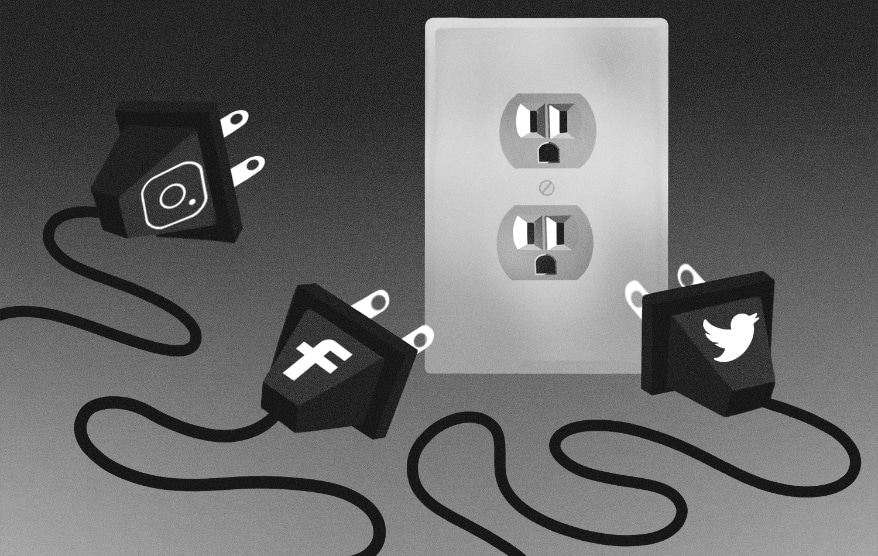
Unplug
Social media can serve as a salutary distraction (funny YouTube videos have been shown to help people deal with anxious thoughts). It also can provide some validation or comfort via interaction with friends. But more often, Twitter, Facebook, Instagram, and TikTok – all of which are driven by algorithms designed to provoke emotional responses – will exacerbate negative feelings or just arouse guilt over wasted time. In his series of books on the benefits of doing “deep work” in an undistracted environment, Cal Newport makes a strong case for setting strict boundaries around your phone use (e.g., leave it in your entry way when you return home). If unplugging is unrealistic, use the “mute,” “block,” “unfollow,” “not interested,” or similar functions to ensure at least you are the one in control of the information flow.
That said, staying on top of your social media presence and your reviews is just part of this industry. One anonymous Brain Squad member offers advice for helping keep things in perspective: “Give the brain something else to work on, like a good book, game night with the family, or a personal creative endeavor.”
Routines
The word “routine” can be a pejorative, but it can also be a mind saver. “Routines help reduce general feelings of anxiety and are often effective antidotes for those with more serious mental health disorders,” Charlotte Lieberman writes in the Harvard Business Review. “Doing the same thing at regular intervals signals to our brains that we are safe. Call it a routine, a ritual, an anchor – whatever resonates,” she says.
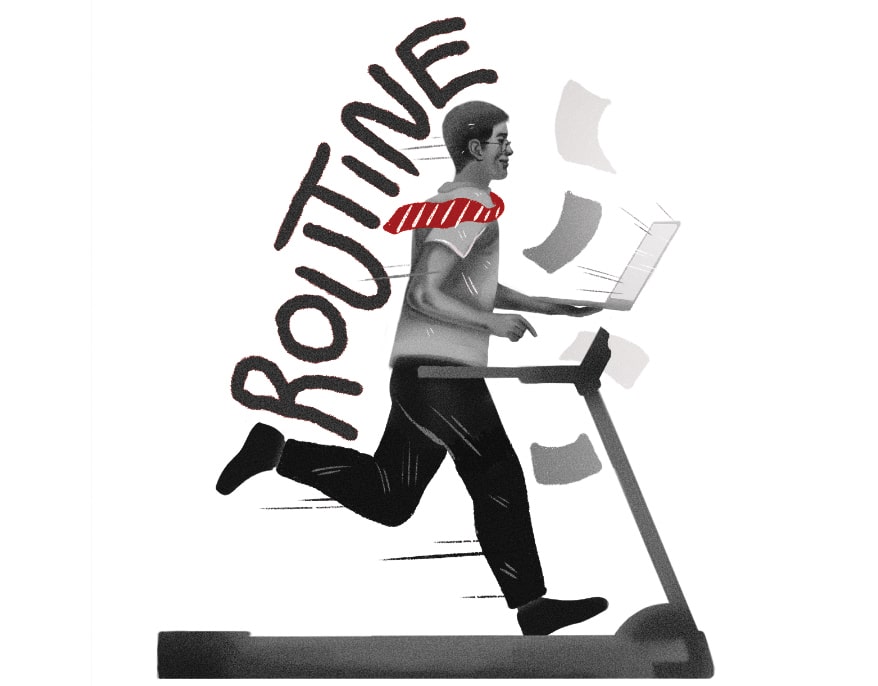
Journal to Unwind
If you hated doing homework in high school (or if you work with words for a living), a writing exercise is probably the last thing you want to do. However, the psychological benefits of externalizing thoughts via journaling are well-established, and you may find the results revolutionary. There is no one set of best practices, but setting some rough guidelines for regular practice can help. You might resolve to do it for six minutes or for three pages, to do it first thing in the morning, or to destroy or archive journal entries after finishing them.
Whatever your rules, it’s usually best to keep the exercise solo. Make it your own private domain to work through the thoughts that may be eating your mind. “Writing allows us to witness our thoughts as separate entities, to get them out of your head,” the clinical psychologist Nicole LePera, author of How To Do The Work, says. “Many of us are living life as if our thoughts are reality. Write down all your thought stream, uncensored. Let them flow and watch them leave the mind.”
Mind Sweep
One Brain Squad member says writing down everything that needs to be done and prioritizing things helps them be less anxious about the work ahead.
The organizational guru David Allen has built a vast international following with essentially the same idea: that getting stuff out of your head and onto a to-do list is a path to mental calm and achievement. “Nothing changes when you write things down except how you engage with your issues: You can be objective and also be creative and intuitive. Your head is for having ideas, not holding ideas. Without exception, you will feel better,” he says.
Allen’s Getting Things Done system starts with a “mind sweep:” listing all tasks and responsibilities. This typically takes a business owners about six hours to complete. The second crucial principle is what Allen calls “next action” thinking. This is his version of the homily “A journey of a thousand miles…,” but it also encompasses the problematic issue of prioritization. Finally, he says a “weekly review” – an hour or so spent going over the list of all long-term projects and short-term next actions – is a must to stay on track.
If the very idea of an endless to-do list causes you angst, add a Kanban system that stores all your to-dos (aside from the handful you’re working on right now) out of sight and out of mind.

Eliminate Stimulants
In The Anatomy of Anxiety, Dr. Ellen Vora uses the phrase “false anxiety” to encompass the agitated state that can arise from not enough sleep, forgetting to eat breakfast, or too much coffee. An elevated heart rate, shaking hands, quivering voice – the general jitters – could be a panic attack, or it could just be the result of six shots of caffeine. Be aware and cut back on your consumption. And to the Brain Squad respondents who jokingly cited drinking as a coping mechanism: with all due respect, that’s likely not helping either.

If you do allow staff to take mental health days, how many a year are they entitled to?
- By law in my province, we are required to provide five paid sick days. These can be mental health days if they want them to be. — Matthew Pierrot, GetBold – T-shirt Printing and Embroidery
- Unlimited days, but if there are more than five per year we need a note from a physician. It’s important people seek professional care if the problem is severe. — Anonymous
- All PTO can be used for mental health days should team members feel the need to take them for this reason. — Andrew Monteyne, All-County Apparel
Learn from the Past
The problems you’re experiencing today seem fraught and important, but that’s mainly because you’re so narrowly focused on the present. This is the reasoning behind the old suggestion to ask yourself whether your worries will matter on your deathbed, or in a decade. But you can do better than look hopefully into the future – look at the past instead.
Try this exercise recommended by Burkeman: Every morning, make a brief note of what feels like your biggest problem. As the list accumulates, you can review earlier entries. “Guess how many months it took for my former worries to seem laughably overblown? Five days: that’s how many months,” he writes. “But that wasn’t the interesting part: what stood out was how many times reality bore no relationship to anything I’d anticipated. I’d worry about some event going badly, but instead of going badly or well, it’d be cancelled. I would worry about how I’d handle some crucial conversation, but by the time it arrived, circumstances had changed, and it wasn’t crucial at all. My gut feelings weren’t so much overly negative as simply irrelevant.”
As Mark Twain so deftly put it 150 years ago: “I am an old man and have known a great many troubles, but most of them never happened.”
“We have a client that ordered several things that needed to be drop shipped to Vegas for an event and we planned as best as we could, but a storm went across the country and delayed several items about four business days,” an anonymous Brain Squad members shares. “Weather related delays are something we always discuss with our clients, but it still does not feel good when it happens. We did a lot of calling, checking tracking numbers, and rechecking them for those four days. The lesson we learned is that items are being drop shipped to an event and need to arrive by a specific date, we will only offer expedited shipping as ground is always the last to make it.”
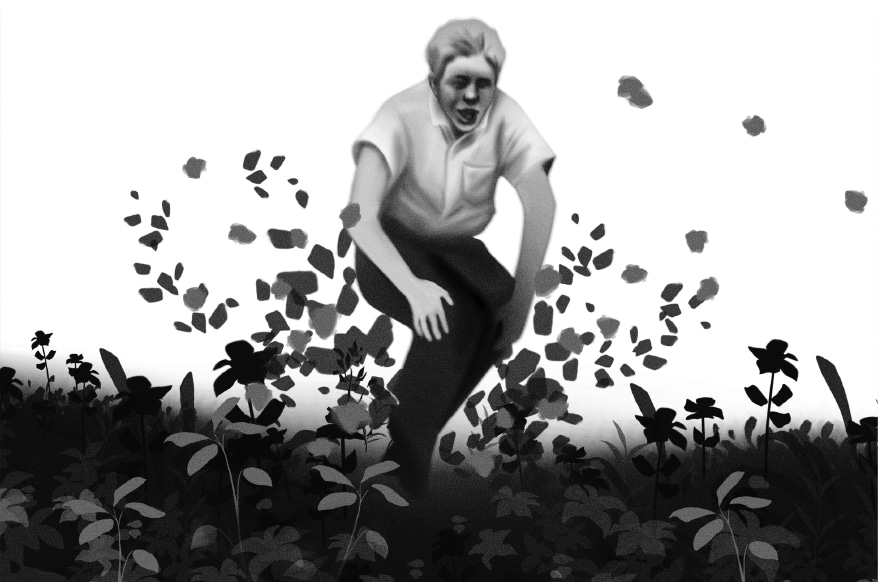
Bathe In Nature
From 2004 to 2012, Japanese scientists spent $4 million studying the physiological impact of “forest bathing,” or spending time around trees. They found it reduces anxiety, boosts the immune system, and amplifies feelings of wellbeing. But you don’t need a forest. Time spent in any natural setting, at parks, among animals (pets or wild), or near bodies of water can relax the mind. For that matter, researchers at the University of Hyogo in Japan say that simply putting small plants on workers’ desks “contributed to their psychological stress reduction regardless of their age or choice of plants.”
The reason seems to be related to the way nature absorbs some of our attention in an undemanding way. It gives us “cognitive quiet” and allowing our minds to relax as opposed to the relentless, aggressive demands on our attention made by much of the rest of the world, US
academics Rachel and Stephen Kaplan say.
Try Mindfulness
It’s almost a point of heresy to say you should expect something from meditation, but let’s put that to one side and consider its two key benefits for dealing with anxiety. First, meditation helps you interrupt your thought patterns and break the cycle of anxiety. Focusing on some abstract element, like your breath or a mantra, creates a pause between the stimulus and the response. Second, more proficient meditation can allow you to examine your thoughts more deeply. “That self-awareness, that regular sort of systematized collision we’re engineering in meditation with the voice in your head, that is revolutionary because as soon as you start to see how chaotic your mind is, that’s the first step toward not being owned by it,” Harris says.
In his book, The Untethered Soul, Michael Singer likens the chatter in your head to a crazy roommate. Through meditation, Singer says, you eventually learn to see your thoughts as distinct from yourself. You learn to tell that roommate to shut up, to start justifying his claims, or to dismiss them as a kind of paranoid rambling.
PART THREE: BUILDING RESILIENCE
Stay Healthy
Diet, rest, and exercise. The science is clear: People who take care of themselves are less prone to anxious thoughts. According to neuroscientists at UC Berkeley, when you don’t get enough sleep, your amygdala and insular cortex both light up in a pattern similar to the abnormal neural activity of people with anxiety disorders.
[Anxiety] affects more my ability to sleep,” Joe Ortinau of Ortinau Art says. “This is actually a recent development, too. I have always been someone that does not require a lot of sleep, but when I am not satisfied with where we currently are with the numbers at the shop, I tend to wake up earlier in the morning. I still get about five hours in this situation, but I am much more productive when I am in the six-hour range.”
Meanwhile, a large-scale study of almost 200,000 cross-country skiers found that being physically active halves the risk of developing clinical anxiety over time. The study, from Sweden, focused on skiing, but the researchers said almost any kind of aerobic activity likely helps protect us against excessive worry and dread.
Habituate
Exposure therapy is the full realization of a tip mentioned earlier – testing to see if your thoughts are valid – but rather than a mind game, it involves physically confronting your fears. If someone gets anxious around spiders, this method would entail putting them in increasingly close proximity to spiders until they learn much of their fear is unfounded. For social anxiety, it might involve something as simple as going up to 10 people and asking for the time. Such a regimen allows you to see nothing bad really happens and much of your imaginings are irrational. Habituate yourself to fear, and it loses its power and control over you, Barker says. He calls such habituation the “gold standard” therapy for dealing with triggered anxieties.
Try TRE
Trauma Releasing Exercises (TRE) are designed to help release deeply held physical and emotional tension stored in the body. Advocates say TRE helps to release this tension and restore balance and wellbeing, improving an individual’s ability to cope with stress and reducing anxiety. TRE might seem a little kooky, but the evidence is robust. If not much is working to reduce your anxiety, you might want to give it a try. Watch an eight-minute introductory video here: screenprintingmag.com/anxiety.
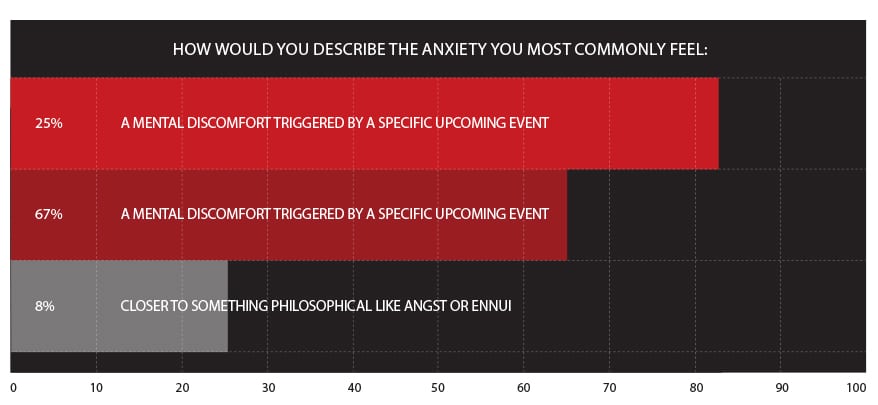
Build Social Connections
Humans evolved to be social creatures, yet much in modern society – from the way our cities are structured to the myth of individualism to social media – is eroding the bonds between us at the cost of our mental health. Reasserting the primacy of human connection in your life – by being deliberate in creating new friendships, or by socializing with family and colleagues outside the home or workplace – can thus be vital to not just boosting mood, but also having someone to talk to when you’re assailed by anxiety. As the author and anxiety therapist Mike Shel puts it: “Until a person feels understood, all the information in the world, all the data, all the scientific understanding of the process and coping strategies are for naught. A person needs to feel that someone gets what they are struggling with.”
“I think I lived in a perpetual stress mode for a few years,” Chessie Rosier-Parker of Squeege & Ink says. “Deadlines, money management, and other little things meant I wasn’t able to turn off the work. Thankfully I had a business partner join the business, which forced me to re-assess workload and finances to be less erratic and reactive.”
Show Yourself Some Compassion
One Brain Squad member says they “mostly have stress and anxiety related to giving a customer a specific set of instructions and then watching the customer ignore the aforementioned set of instructions. I typically cope with this stress by sending them a reminder when the price increases again.”
Business coach Jerry Colonna says we’re all trying to manage three basic risks: to love, to safety, and to belonging. The existential fear that these needs could be threatened is often at the root of anxiety, he says. “I know for myself that the fear of disappointing others is a threat to my belonging. I’m not going to be in my family anymore. My children won’t love me. My partners won’t love me. I will be unsafe. I will be bereft. I’ll be alone in the woods, fending for myself …” And so goes the catastrophizing spiral.
The key to dealing with such irrational thinking is self-compassion and accepting the fullness of ourselves. In his book, Reboot: Leadership and the Art of Growing Up, Colonna writes: “‘I am enough and I’m doing the best that I can.’ And if I can say that to myself every day in one form or another, that can be helpful.”
To help bring your mind around to such a perspective, he recommends journaling (regularly using “I am enough” as a prompt) and metta meditation, aka “loving-kindness meditation.” Yes, it sounds woo-woo, as Colonna acknowledges himself, but when it comes to anxiety, we are often our own our worst enemies because the primary source of our negative thinking is ultimately ourselves.
None of this is to say anxiety will feel any better. With evolutionary roots as a warning system, it will always feel at least uncomfortable. Anxiety becomes maladaptive when it paralyzes. The answer is thus to appreciate that we humans are “anti-fragile” – we strengthen and grow when challenged. When we know what’s required and can marshal the resources to cope with them, scary things become challenges rather than threats. In the words of the late psychologist Susan Jeffers, “feel the fear and do it anyway.”
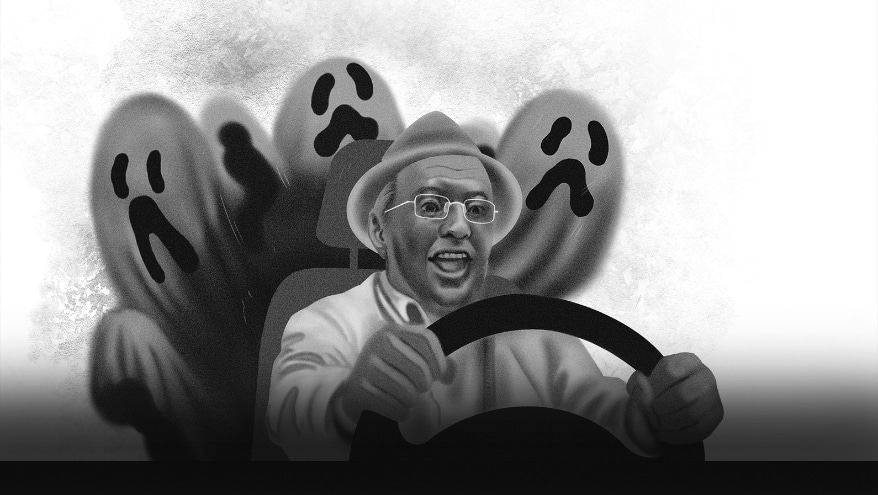
Reframe Anxiety
Tech entrepreneur Naval Ravikant has wondered publicly if he would have been as successful if he “wasn’t as anxious, because anxiety comes from fear and it’s also a motivator. It makes you get off your butt.” It’s an interesting view and a reminder that true mental health comes from recognizing and accepting the complete spectrum of emotions.
Indeed, when we feel bad, the answer isn’t to stifle those emotions or berate ourselves. “Rather, we need to understand what they’re for,” Dr. Emiliana Simon-Thomas, science director at Berkeley’s Greater Good Science Center told Time, arguing we should relate to unpleasant emotions in a way “that’s more restorative – more growth- and learning oriented.” Perhaps such feelings are signal that we’re following the wrong path with our business or relationships, or we are distressed about the state of the world. Instead of trying to erase this sensation, we should embrace it, she says, and view anxiety as a tool and an ally.
Andy MacDougall of MacDougall Screen Printing says he used to “freak when things looked grim. I’d get all torn up inside wondering how we would make the next payroll or deal with the bank on our line of credit or if I could pay my mortgage. After a few years of this, I finally realized that for all the worry and stress, as long as we were working hard, something always showed up – a check or jobs or both – and I finally just let it go. Not to say there weren’t situations that would arise, but once I realized, ‘Hey, it always works out’ I just stopped getting anxious. It was really like a cloud lifted. With so many other things going on, the cashflow situation stopped being a distraction. Epiphany? I guess. As my childhood hero Alfred E Newman said, ‘What, me worry?’”
Alicia Borromeo, of Logowear House says “I’ve definitely had moments where a client complained about something over email or in person, and it kept me from focusing on the rest of my day, or left me paranoid about simple project details. I always reference the episode of ‘Spongebob,’ where he thinks he messed up a Krabby Patty order and slowly forgets how to do his job and every other task in his life. It takes his boss pushing him to go one step at a time to regain his confidence and get back on track. Our management style is a lot like this: mistakes happen, and it definitely affects everyone on the team, but being able to slow down, take each moment in stride, and reframe a problem within a wider scope really helps bring me back into focus and move forward.”
Chris Burslem is Group Managing Editor at SmartWork Media.

SPONSORED VIDEO
Let’s Talk About It
Creating a More Diverse and Inclusive Screen Printing Industry
LET’S TALK About It: Part 3 discusses how four screen printers have employed people with disabilities, why you should consider doing the same, the resources that are available, and more. Watch the live webinar, held August 16, moderated by Adrienne Palmer, editor-in-chief, Screen Printing magazine, with panelists Ali Banholzer, Amber Massey, Ryan Moor, and Jed Seifert. The multi-part series is hosted exclusively by ROQ.US and U.N.I.T.E Together. Let’s Talk About It: Part 1 focused on Black, female screen printers and can be watched here; Part 2 focused on the LGBTQ+ community and can be watched here.
You may like
Advertisement

Atlantis Headwear Goes Solar for Sustainable Future

Comfort Colors Announces New Proprietary Dyeing Process Called “Pigment Pure”

10 Production Scheduling Secrets That Will Have Your Team Ready to Rock
SUBSCRIBE

Bulletins
Get the most important news and business ideas from Screen Printing magazine's news bulletin.
Advertisement
Latest Feeds
Advertisement
Most Popular
-

 Case Studies2 months ago
Case Studies2 months agoHigh-Density Inks Help Specialty Printing Take Center Stage
-

 Art, Ad, or Alchemy2 months ago
Art, Ad, or Alchemy2 months agoF&I Printing Is Everywhere!
-

 Andy MacDougall2 months ago
Andy MacDougall2 months agoFunctional and Industrial Printing is EVERYWHERE!
-

 Columns4 weeks ago
Columns4 weeks ago8 Marketing Mistakes Not to Make When Promoting Your Screen Printing Services Online
-

 Editor's Note3 weeks ago
Editor's Note3 weeks agoLivin’ the High Life
-

 Marshall Atkinson3 weeks ago
Marshall Atkinson3 weeks agoHow to Create a Winning Culture in Your Screen-Printing Business
-

 Thomas Trimingham2 months ago
Thomas Trimingham2 months ago“Magic” Marketing for Screen Printing Shops
-

 Case Studies4 weeks ago
Case Studies4 weeks agoScreen Printing for Texture and Depth















